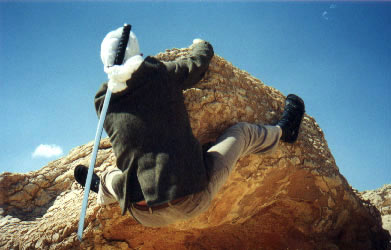The 18 Traditional Ninjutsu Skills: Ancient Disciplines and the 21st century
The 18 Ninjutsu skills formed a complete training system that turned regular people into effective operatives who could survive feudal Japan's chaos. These weren't just fighting techniques—they created warrior-scholars able to adapt to shifting political and social conditions.
At AKBAN, we know some skills now serve mainly as cultural study. But their core principle—gain, not glory—still builds resilience, adaptability, and strategic thinking today.
Table of Contents
- Martial Foundations
- Weapons Arts
- Stealth and Infiltration
- Strategic Arts
- Natural Sciences
- Shugendō and Mystical Foundations
- Modern Relevance
Martial Foundations

Taijutsu (体術) forms the cornerstone of all Ninjutsu training. This unarmed combat meta-system uses the body as the primary weapon, incorporating strikes, throws, joint locks, and ground fighting. Unlike other martial arts that specialize in one aspect, Taijutsu develops complete physical capability as the foundation for all other skills.
Browse the complete Taijutsu syllabus.
The spiritual dimension appears in Seishin-Teki-Kyō'yō (精神的教養), the mental and spiritual cultivation that separates technique mastery from life mastery. This covers seven principles: self-knowledge, understanding nature, accepting fate, finding harmony, developing courage, sharpening perception, and embodying love for one's destiny and community.
Weapons Arts
The ninja's weapon training went far beyond the sword, covering six distinct disciplines. Learning so many weapons shows the ingenuity required from a Ninjutsu operative. This compares to the wide variety of weapon systems that modern special forces soldiers must master.
Browse the weapons techniques
Kenjutsu (剣術) and Sōjutsu (槍術) covered the fundamental battlefield weapons—sword and spear—while Bōjutsu (棒術) taught staff fighting that could transform any walking stick or tool into a defensive weapon. Naginatajutsu (長刀術) provided training with the curved-blade polearm, essential for both mounted and foot combat.

More specialized were Shurikenjutsu (手裏剣術), the art of throwing blades, and Kusarigamajutsu (鎖鎌術), mastery of the chain-and-sickle weapon. These unconventional arms required not just physical skill but strategic thinking—when and how to deploy tools that could surprise conventional warriors.
Browse the Ninja chain techniques
Stealth and Infiltration
The arts of covert movement and castle infiltration formed a distinct capabilities. Shinobi-iri (忍び入り) used movement skills (running long distances and climbing), camouflage, and architectural knowledge needed for covert entry. This required top fitness and understanding building construction, guard patterns, and human psychology.
Hensōjutsu (変装術) taught the spying skills of disguise and impersonation, allowing operatives to move openly by assuming different identities. Success demanded not just costume changes but mastery of regional accents, occupational mannerisms, and social protocols.
Intonjutsu (隠遁術) covered escape and concealment techniques, ensuring survival when missions went wrong. This included everything from smoke bombs and decoys to psychological misdirection and terrain usage.
Strategic Arts
Bōryaku (謀略) and Chōhō (諜報) represent the intellectual heart of Ninjutsu—military tactics and strategy. These disciplines transformed physical capabilities into strategic advantages, teaching intelligence gathering, analysis, and the deployment of information as a weapon.
The Ninjutsu skills required deep understanding of politics, economics, and human nature. It is important to know that then, as now, covert and special operations went hand in hand with regular military campains and duties. Ninjutsu skills complemented Samurai ruling class skills.
Natural Sciences
Tenmon (天文) and Chi-mon (地文)—meteorology and geography—provided the environmental awareness essential for survival and tactical advantage. Reading weather patterns could mean the difference between successful infiltration and disaster, while geographic knowledge enabled route planning and resource location.
Sui-ren (水練) encompassed water training, including swimming, underwater movement, and aquatic combat. Bajutsu (馬術) covered horsemanship—not just riding, but mounted combat and the care of these valuable animals.
Kayakujutsu (火薬術) involved pyrotechnics and explosives, representing the cutting-edge technology of the era. This required both practical chemistry knowledge and the strategic understanding of when dramatic effects served better than subtle approaches.
Shugendō and Mystical Foundations

physical and spiritual development
The mystical dimension of Ninjutsu draws heavily from Shugendō, the mountain ascetic tradition that influenced many ninja lineages. The Yamabushi mountain priests developed practices that integrated physical endurance, spiritual discipline, and practical survival skills—a combination that proved invaluable to covert operatives.
This mystical foundation wasn't mere superstition but a sophisticated understanding of psychology, physiology, and group dynamics. Meditation practices developed mental clarity under stress, while ritualistic training built unshakeable confidence and group cohesion.
The spiritual aspects also encompassed what we might now call "psychological operations"—understanding how symbols, timing, and mysterious appearances could amplify a small force's impact through fear and confusion among enemies.
Modern Relevance: The AKBAN Approach
While we choose not to train with explosives or maintain war horses, the principles underlying the 18 skills remain remarkably relevant. At AKBAN, we've adapted these traditional disciplines into modern frameworks that develop the same core capabilities: physical competence, strategic thinking, environmental awareness, and psychological resilience.
Our Methodical Pyramid integrates these ancient insights with contemporary understanding of human performance, creating training that honors the tradition while serving today's practitioners. The goal remains unchanged: developing complete individuals capable of thriving in any environment through skill, wisdom, and community.
The 18 skills remind us that true martial mastery extends far beyond fighting techniques. They represent a complete education in human potential—as relevant today as they were centuries ago in the mountains and shadows of feudal Japan.
